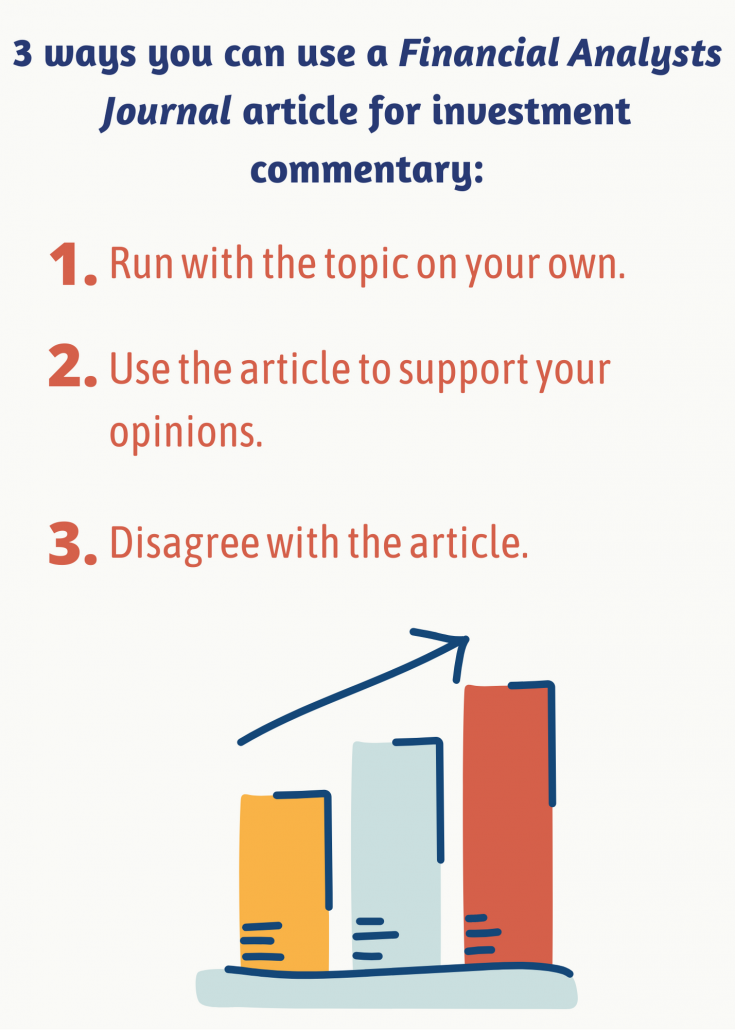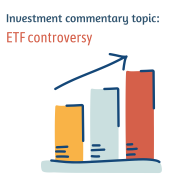Investment commentary topic: ETF controversy
Are you tired of only discussing recent market developments in your investment commentary? Look to your professional reading for ideas, as I suggest in my webinar, “How to Write Investment Commentary People Will Read.” A topic leaped out at me when I read the CFA Institute’s Financial Analysts Journal (FAJ) from 2021’s first quarter.
The title of “Levered and Inverse Exchange-Trade Products: Blessing or Curse?” (summary available, but subscription required to read the entire article) lays out the topic clearly. The authors say in their summary: “levered and inverse products are not, and cannot be, effective investment management tools.”
If this is a topic that interests you, as well as your clients and prospects, there are several approaches you can take.

Approach #1. Run with the topic on your own.
If you know this topic well, you may be able to opine at length off the top of your head. Go for it, if that’s what your clients expect and enjoy. The FAJ article has served its purpose if it only identifies a new topic for you.
A variation on this approach is to simply explain what levered and inverse ETFs are. If you’re writing for an audience of retail investors, they may never have heard of them or may not understand what they are. They’ll need a plain-English explanation. Of course, before you dig into the details, explain why your readers should care that these funds exist.
Approach #2. Use this article to bolster your case against these ETFs.
The authors discuss how “the most important problem with geared (levered) and inverse funds is that most of them are expected to collapse.” As part of this, they review these ETFs’ history and performance. There’s likely to be some information you can use to make your case against these ETFs.
The degree of detail that you go into will depend on your audience. Sophisticated institutional investors will understand (and be interested in) more details and technical information than your typical retail investor.
When you quote—or use statistics from—this FAJ article, refer to it as the source. That’s only fair. Plus, mentioning a reputable source like the FAJ will enhance your credibility.
I explain one approach to this kind of article in “Financial blogging tip: opinion + summary.”
Approach #3. Argue against the article’s conclusion.
If you think the article’s conclusion is wrong, say why. Is there a big hole in the authors’ arguments? Or perhaps you think the authors too quickly dismiss these ETFs’ value as what even they admit is “an inexpensive, convenient, highly levered, and limited-liability means for profiting from a directional price view.”
If your firm isn’t a creator of such ETFs, visit the websites of the creator firms. They’re bound to have helpful information.
If you disagree with the article, you may not want to refer to the article in your commentary. However, if your clients have read the article, mentioning it shows that you don’t ignore all information that disagrees with you. That’s good. You can also rebut specific points, while referring to areas where you agree.
Bonus investment commentary topics
Two of the other articles in this issue of the FAJ also struck me as potential sparks for your investment commentary:
- “Should Mutual Fund Investors Time Volatility?” —Volatility is a timely topic. You don’t necessarily need to go into the details of the authors’ thesis. You can see where the topic takes you.
- “Reports of Value’s Death May Be Greatly Exaggerated”—This is a topic close to the hearts of value investors who’ve been suffering for years as growth has outperformed. You may not agree with the take of Research Affiliates’ Rob Arnott and his coauthors. However, they raise questions worth considering. For example:
- “Was value merely lucky in the past, or is it now arbitraged away by its own popularity?”
- “Have structural changes in the economy made the value factor newly irrelevant?”
- “What to expect from value?”
The FAJ’s other two articles could serve as fodder for some commentary, but their appeal is more limited. This blog post discusses the three articles that I think have the broadest possible appeal.
YOUR ideas?
Have you read something that could spur interesting investment commentary? Please comment.





